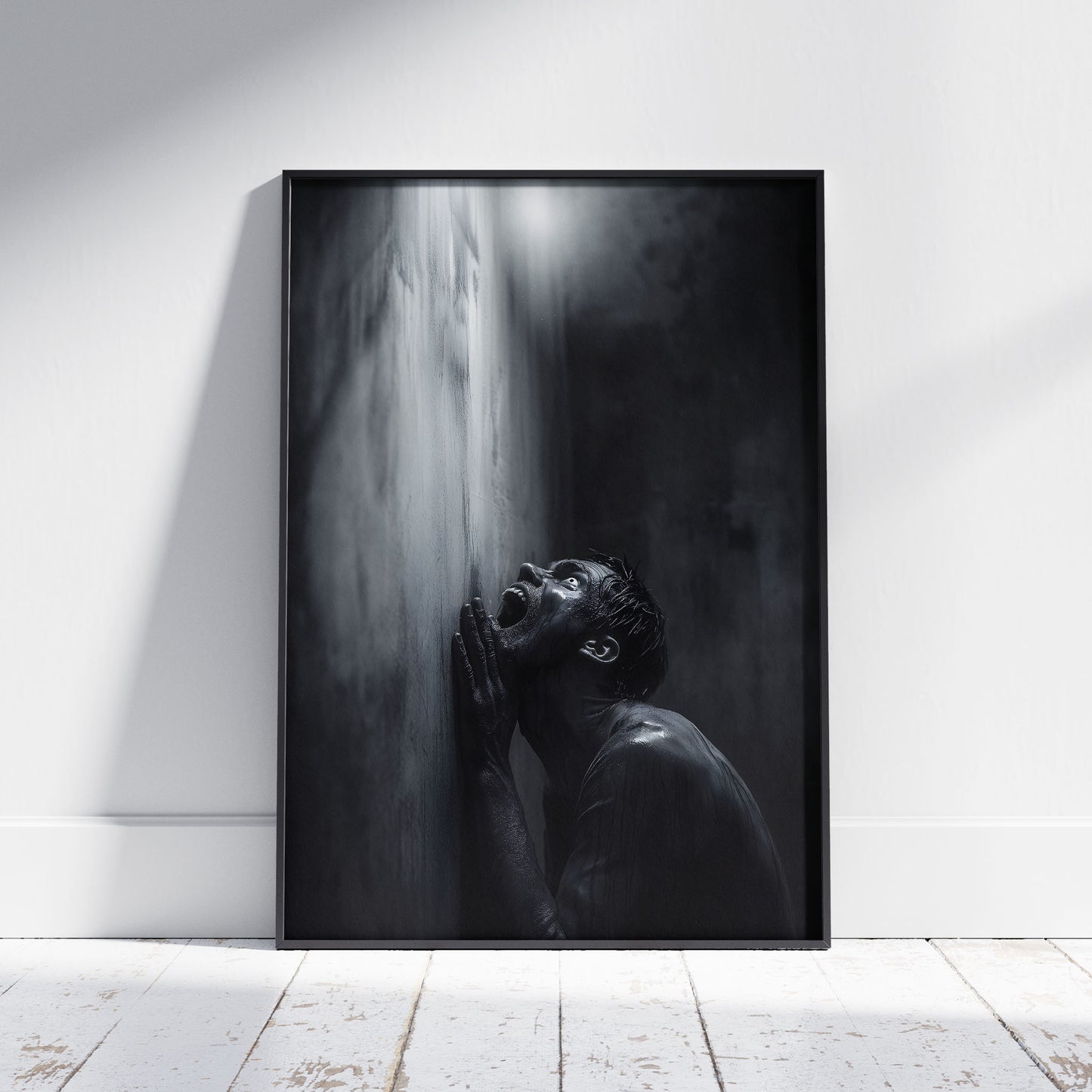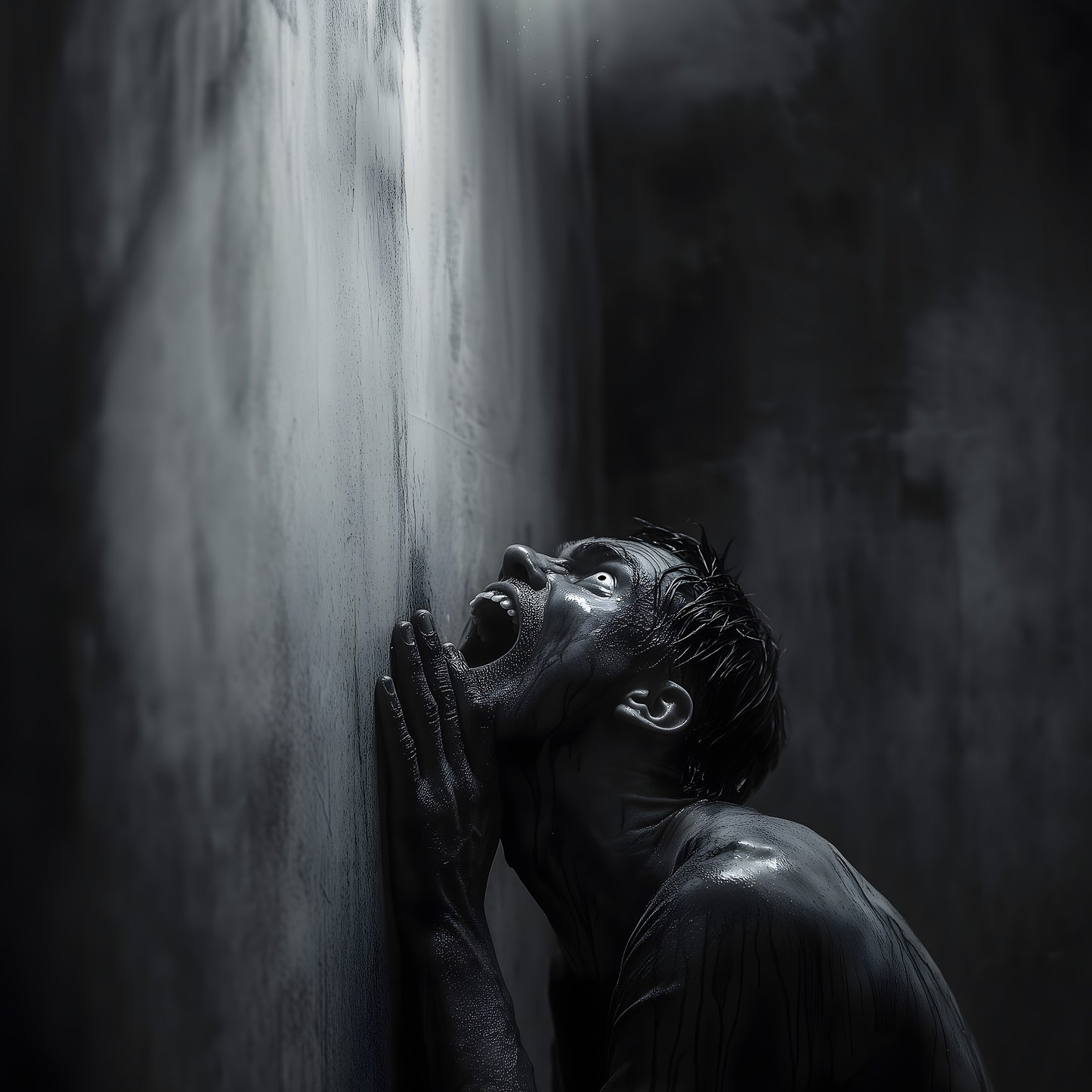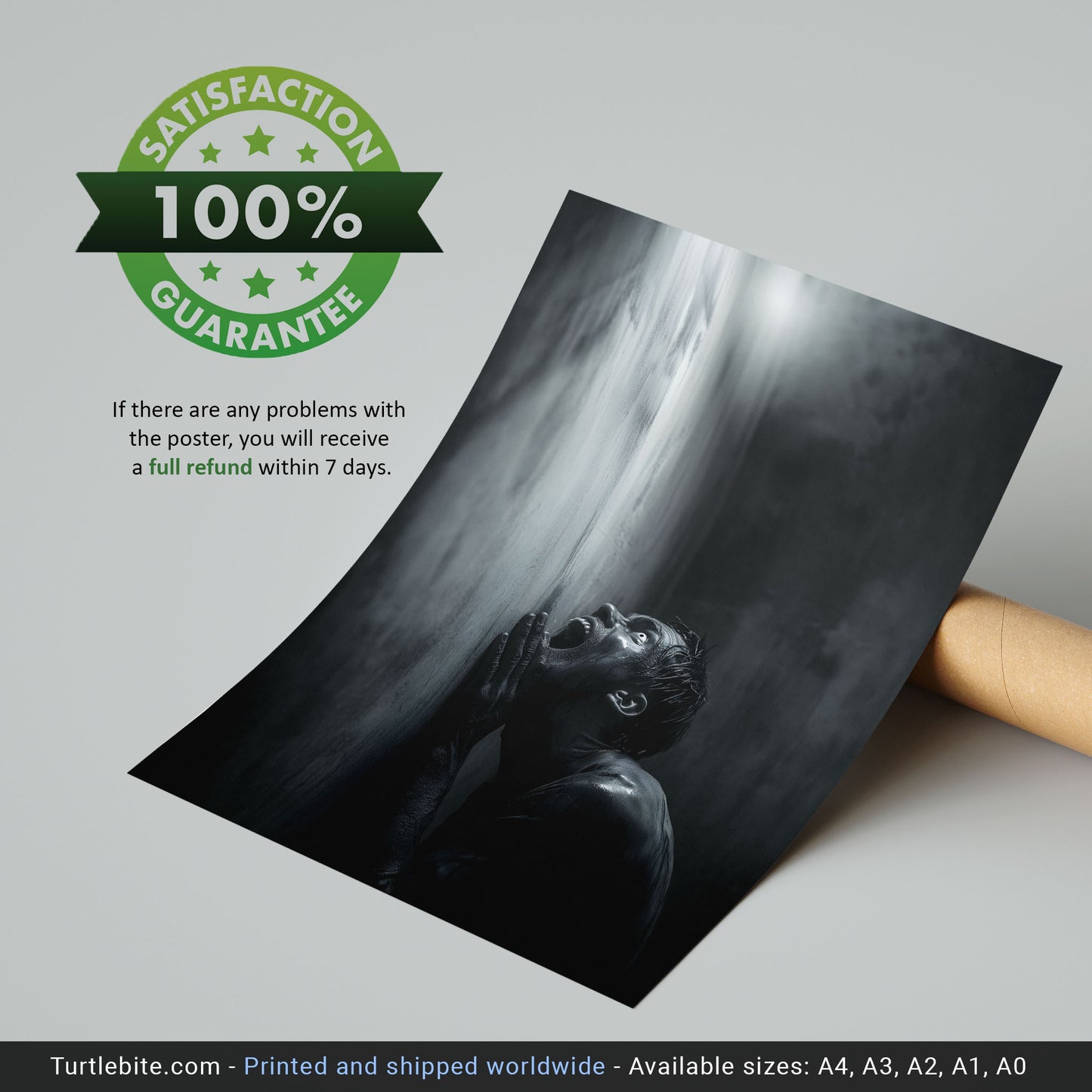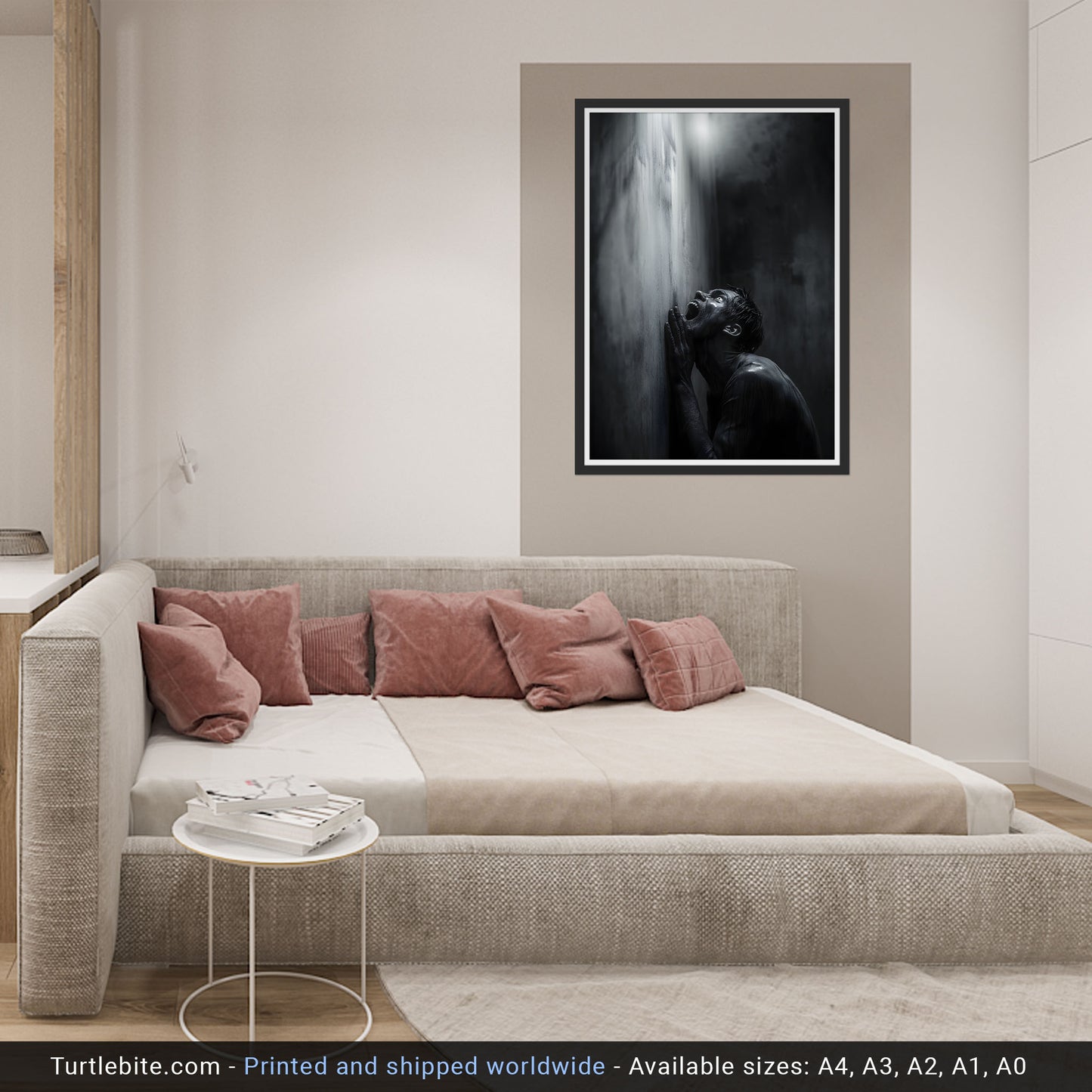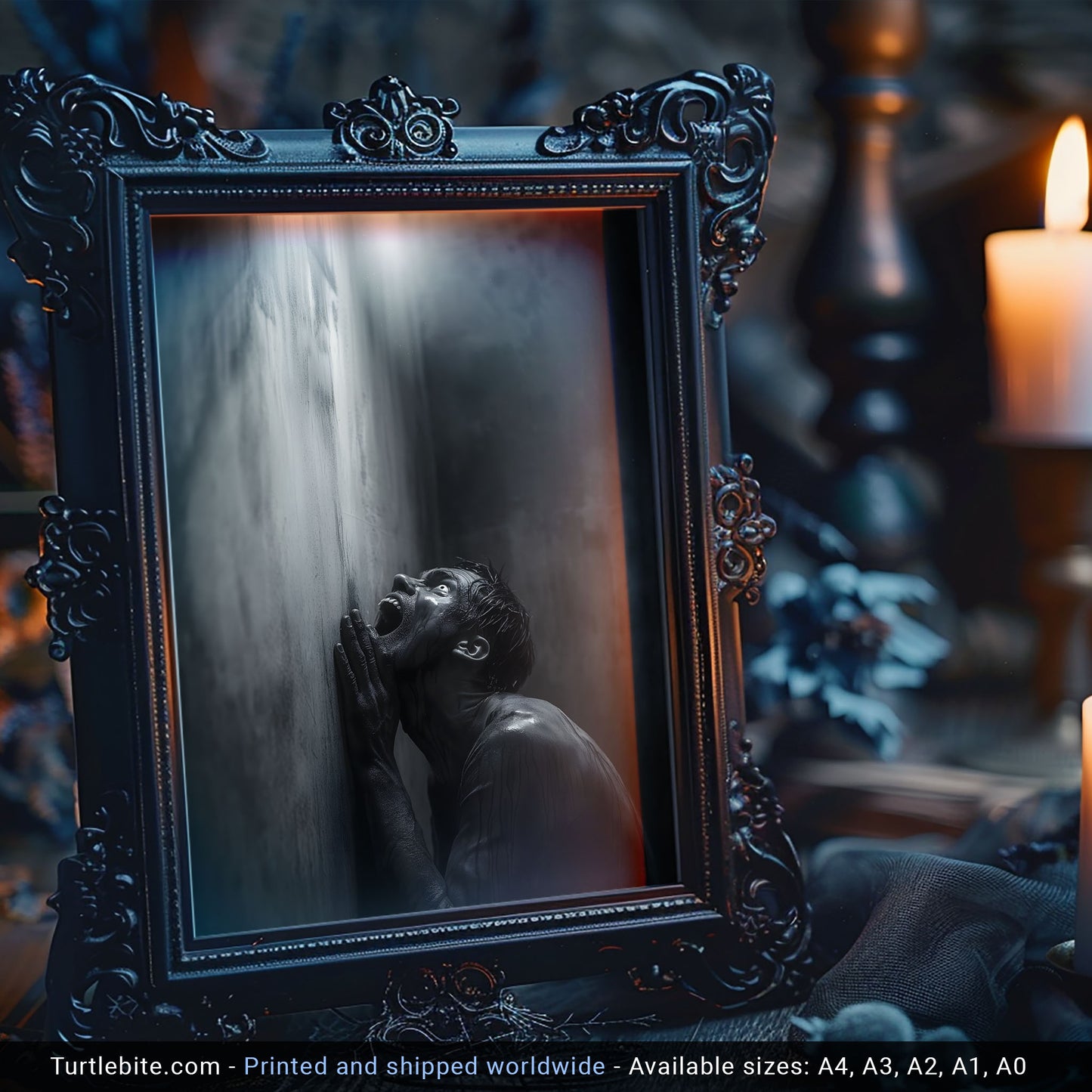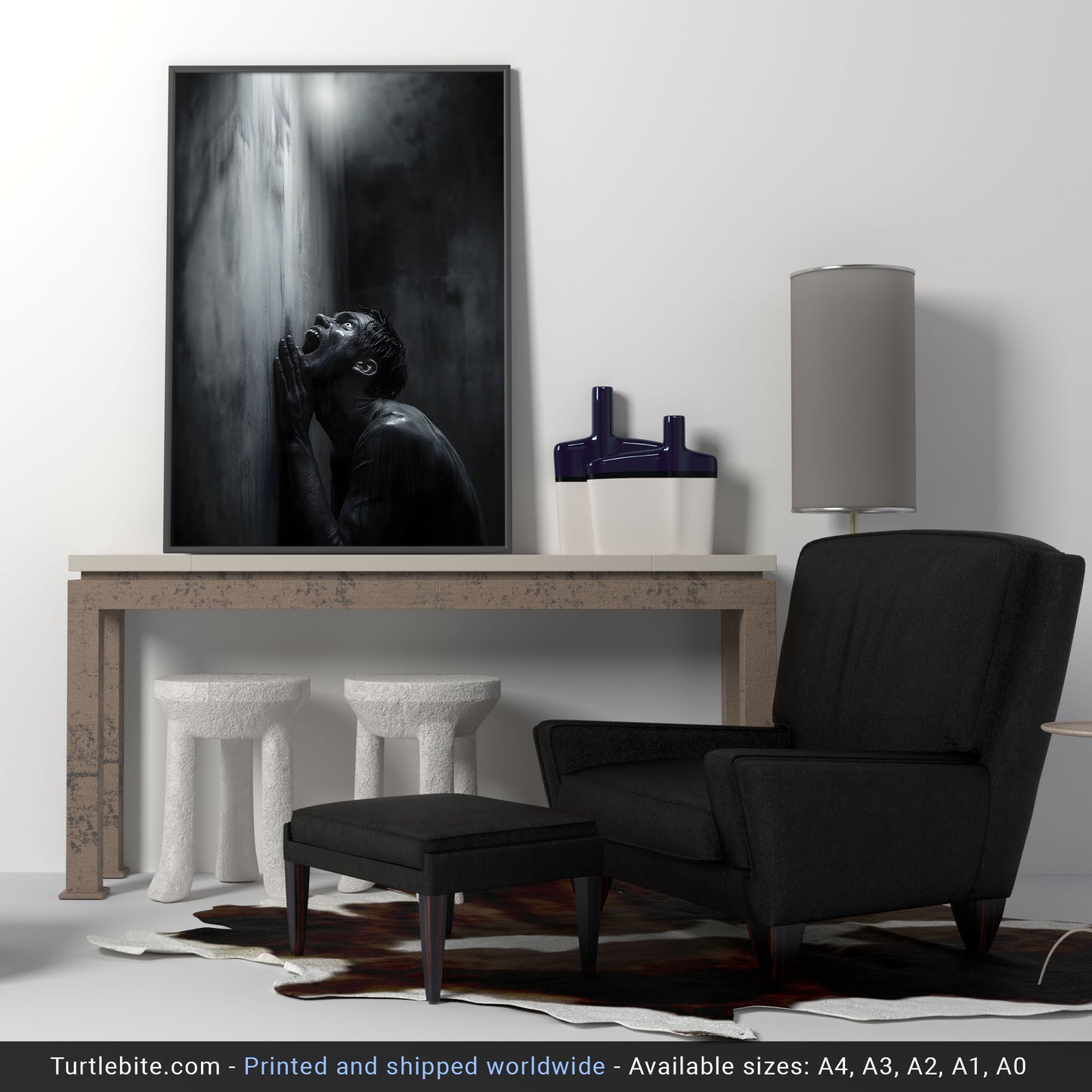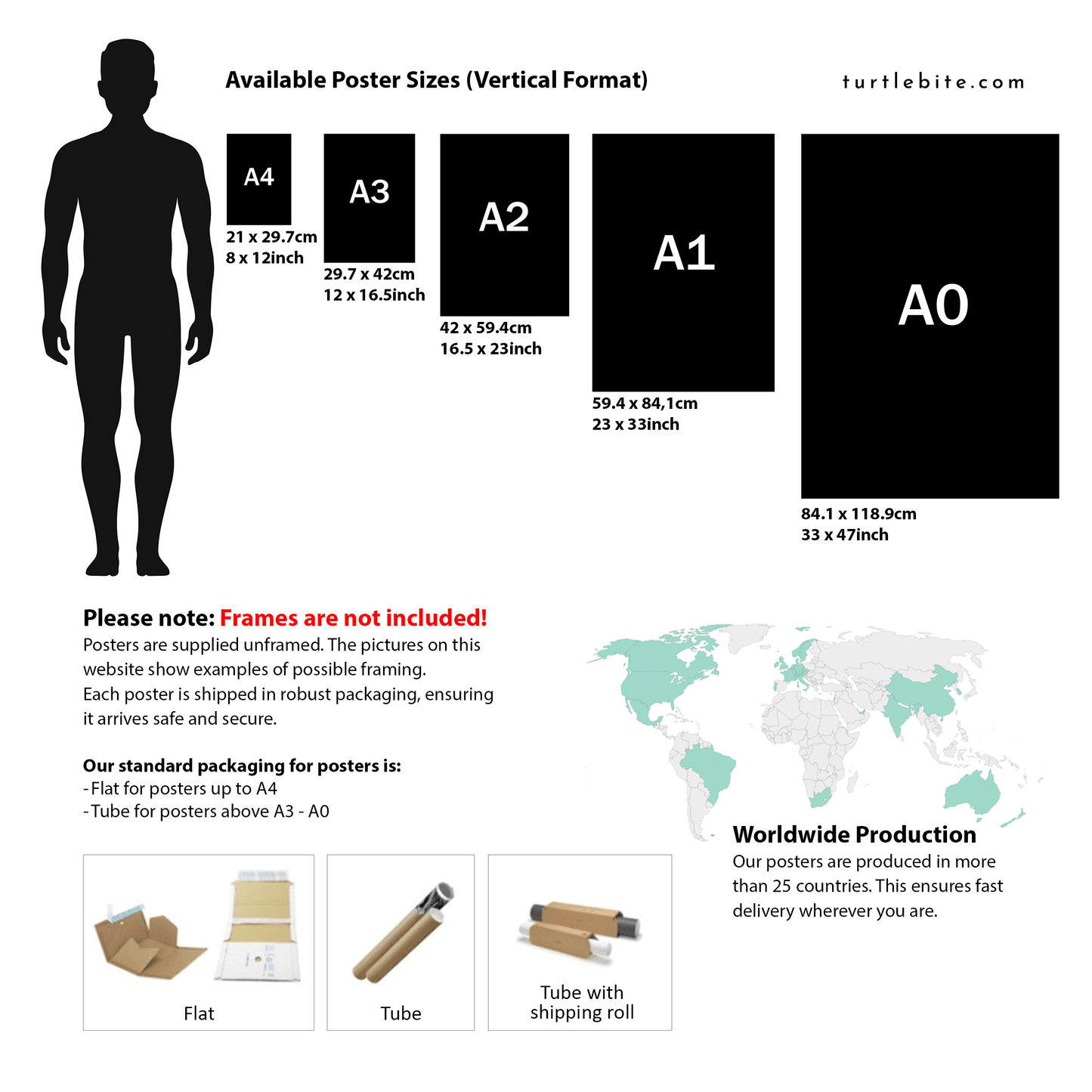
The Art of Agony: Why We're Drawn to Despair
ChristianShare
Trapped in the Frame: Why Art That Screams of Mental Anguish Is So Damn Captivating
Let’s be honest. The image at the top of this page is a gut punch. It’s not exactly something you’d hang in the living room for your next family gathering, right? It's raw, it's uncomfortable, and it depicts a level of suffering that feels almost too private to witness. And yet, I bet you couldn't immediately look away.
There's something magnetic about this kind of dark art photography. It pulls you in, demanding you to look closer at the emotional turmoil boiling on the surface. Ever felt an emotion so big, so all-consuming, that it felt like the only solution was to press yourself against a cold wall and just scream into the void? Yeah, me too. And that, my friend, is precisely why this kind of art isn't just "edgy" – it's essential.
The Uncomfortable Allure of Despair in Art
So, what’s the deal with our fascination with human suffering when it's framed and put on display? Are we all just a bunch of secret sadists? I don't think so. IMO, it’s about one of the most fundamental human needs: validation.
When we look at a piece depicting pure mental anguish, a part of our brain, the part that holds our own private fears and anxieties, lets out a sigh of relief. It’s the feeling of "Oh, so it's not just me." It’s catharsis. Seeing an artist give form to something as formless and chaotic as despair helps us feel less alone in our own struggles.
This photograph is a masterclass in that. It doesn’t shy away or romanticize the pain. It shoves it right in your face. The raw, unfiltered agony is a mirror, reflecting the potential for such feelings that exists in all of us. It’s a powerful reminder that the human experience isn’t all sunshine and filtered selfies. Sometimes, it's this. And acknowledging that is incredibly freeing.
Deconstructing the Agony: A Look Through the Lens
So, how does a simple picture manage to convey such a complex and visceral feeling? It’s not magic; it’s a brilliant combination of artistic choices that all work together to twist that knife. This isn't just a snapshot of a bad day; it’s a carefully constructed piece of psychological art.
Let’s break down the elements that make this image so potent.
The Stark Reality of Black and White
The first thing that hits you is the lack of color. This is a deliberate and powerful choice. Black and white photography has a unique ability to strip away all distractions. There are no pretty colors to soften the blow. What are you left with?
- Raw Emotion: Without the distraction of color, the subject's expression becomes the undeniable focal point. You're forced to confront the agony in his face.
- Form and Texture: You notice the strained muscles in his neck, the taught skin over his knuckles, the way the liquid (is it sweat? tears? grimy water?) runs down his skin. The world becomes a study in texture and shadow.
- Timelessness: Black and white makes the scene feel universal. This isn't a specific person in a specific time; this could be anyone, anywhere, throughout history, battling their inner demons. It transforms a personal moment into an archetypal one.
Chiaroscuro and the Spotlight of Pain
Artists have been using high-contrast lighting, or chiaroscuro, for centuries to create drama, and boy, does it work here. That single, intense beam of light from above is doing so much work. It’s not the gentle, hopeful light of a divine presence. No, this feels different.
It feels like an interrogation lamp, pinning the subject in his moment of torment. It creates a suffocating sense of confinement, as if he's at the bottom of a well or in a prison cell with no escape. The light doesn't offer salvation; it merely illuminates the horror of the situation. The surrounding darkness becomes heavier, more absolute, making the lit space feel less like a refuge and more like a stage for his suffering.
The Visceral Texture of Torment
This is where the visceral art aspect really shines. The artist didn't just want you to see the pain; they wanted you to feel it. The grimy, streaked wall looks cold and unforgiving to the touch. The slick, wet sheen on the man’s skin evokes a primal, sweaty struggle. You can almost smell the damp, musty air.
This isn’t clean, Hollywood-style suffering. It's gritty, messy, and uncomfortably real. This dedication to texture makes the emotional expression leap from the two-dimensional plane. You’re not just an observer; you’re in that dark, damp space with him, and it's claustrophobic as hell. :/
More Than Just a Pretty (or Ugly) Picture: Conceptual Photography and Inner Demons
Okay, so we've established the technical brilliance. But a piece like this is more than the sum of its parts. This is a prime example of conceptual photography, where the goal isn't just to capture reality but to represent an idea or a feeling. The "concept" here? The lived experience of what mental anguish feels like.
This image gives a physical form to abstract concepts we all grapple with:
- Existential Dread: The feeling of screaming into a void that doesn't scream back.
- Feeling Trapped: Being confined not by physical bars, but by your own mind or circumstances.
- Powerlessness: The desperate cry for help or release when none seems to be coming.
Haven't we all had moments where this image is basically a selfie of our soul? It’s the visual representation of every silent scream we've swallowed, every moment we've felt cornered by our own thoughts. This is art that depicts emotional pain in its purest form, and in doing so, it gives a name and a face to the inner demons we’re often told to hide.
The Artist's Scream: Channeling Turmoil into Creation
This brings up a fascinating question: who makes this kind of art, and why? Creating something this emotionally heavy can't be an easy process. I imagine it requires the artist to go to a very dark place internally. So why do it?
For many, it's a profound act of artistic expression of pain. It’s a way to take the chaos, the agony, and the turmoil swirling inside and give it structure and form. To channel it into something tangible is to gain a measure of control over it. It’s a scream that, instead of echoing into nothing, becomes a permanent, powerful statement.
This is how to channel inner turmoil into art. It’s a process of transformation – turning raw, destructive energy into something constructive and, in its own dark way, beautiful. And honestly, it’s probably a way healthier coping mechanism than bottling everything up until you start yelling at your toaster for burning your bread. We've all been close, right?
The vulnerability it takes for an artist to put this piece of themselves out into the world is staggering. They are essentially saying, "This is a part of me. This is what my darkness looks like." And by sharing it, they create a space for the rest of us to acknowledge our own.
It's Okay to Not Be Okay, and Art Knows It
So, what's the final takeaway? Art that explores psychological horror and mental anguish isn’t just about shock value or "being dark." It serves a deeply human purpose. It validates our struggles, offers a strange form of comfort through shared experience, and allows for a moment of profound, silent connection between the artist, the subject, and the viewer.
This photograph is a testament to the power of art to articulate the inarticulable. It captures a feeling that words often fail to describe. It’s a raw, uncomfortable, and brilliant exploration of the darker corners of the human psyche.
The next time you come across a piece of art that makes you squirm or feel a pang of sadness, maybe don't just scroll past it. Take a second. Look closer. It might just be telling you something you already know, and reminding you that even in the deepest, darkest pits of despair, you are not entirely alone.


